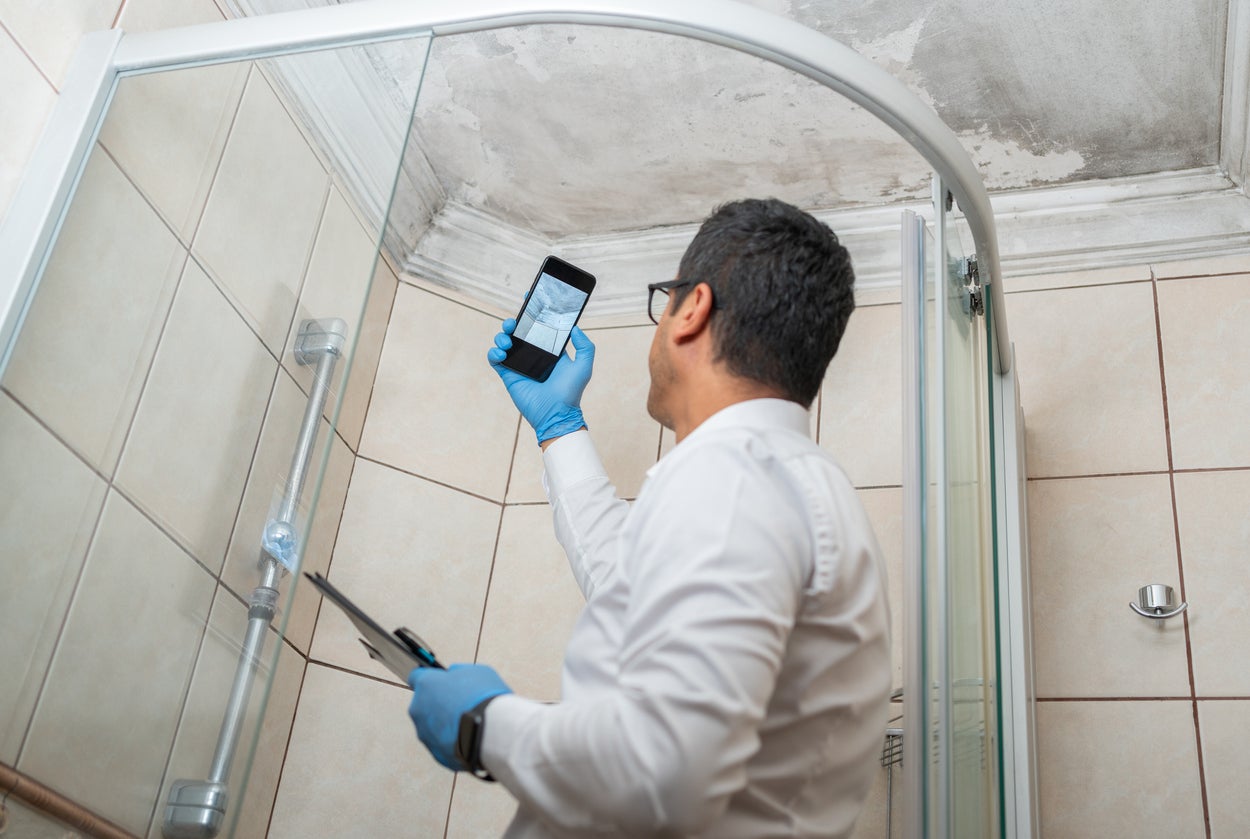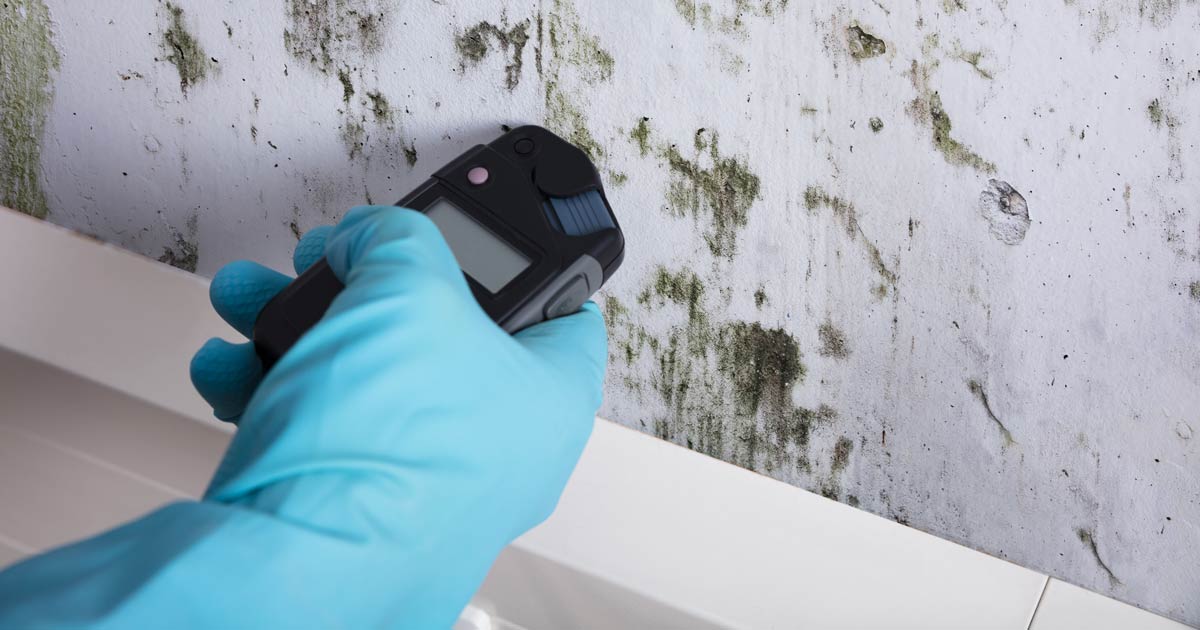Crafting a Comprehensive Post Mold Remediation Report
Wiki Article
Specialist Tips for Message Mold Remediation Success
In the world of mold removal, successfully removing mold and mildew is only half the fight; the true obstacle hinges on avoiding its reappearance. Post-remediation initiatives play a crucial function in ensuring a mold-free setting in the long-term. By sticking to experienced suggestions and best practices, people can guard their areas versus mold and mildew renewal and maintain a healthy indoor atmosphere. It remains in this phase of the removal process that attention to detail and positive measures really make a distinction.
Screen Moisture Levels Consistently
Routine monitoring of moisture levels is crucial in making certain the efficiency of post mold and mildew remediation initiatives. After finishing mold and mildew removal procedures, preserving optimum moisture degrees is crucial to avoid mold re-growth and make sure a healthy and balanced indoor setting. Surveillance moisture levels allows for early discovery of any kind of spikes or variations that can possibly lead to mold resurgence. High moisture degrees over 60% develop a favorable environment for mold to thrive, making routine keeping an eye on a positive action to avoid any kind of future mold problems - Post Mold Remediation.In addition, establishing a regular schedule for humidity checks, specifically in high-risk locations such as cooking areas, basements, and washrooms, is a proactive method to mold prevention. By regularly keeping an eye on moisture degrees, home owners can successfully mitigate the risk of mold reoccurrence and keep a healthy indoor environment post-remediation.
Conduct Thorough Inspections Post-Remediation
Following the completion of mold and mildew removal treatments, it is critical to conduct extensive examinations to confirm the efficiency of the removal procedure. These post-remediation assessments are crucial in ensuring that the mold and mildew problem has actually been efficiently addressed which there is no recurrence or continuing to be mold development. Assessments should be accomplished by certified experts who have know-how in determining mold and evaluating indoor air high quality.During these examinations, numerous techniques such as aesthetic evaluations, air sampling, and surface area sampling may be used to extensively assess the remediated areas. Visual analyses entail a comprehensive evaluation of the facilities to inspect for any kind of noticeable indicators of mold development or water damage. Air sampling helps in establishing the air-borne mold and mildew spore levels, while surface area tasting can spot mold fragments on surface areas.
Implement Proper Air Flow Methods
After making certain the efficiency of the mold remediation process with thorough evaluations, the next vital action is to concentrate on executing proper air flow methods. Appropriate ventilation is important in avoiding mold reoccurrence by managing wetness degrees and promoting air circulation. To accomplish this, it is suggested to make use of exhaust followers in areas prone to high humidity, such as washrooms and kitchen areas. Additionally, opening up doors and windows when climate permits can assist improve air flow and reduce moisture you can check here buildup. Air purifiers and dehumidifiers are additionally beneficial tools in keeping optimal indoor air high quality.
Appropriate air flow not just aids in avoiding mold development however also contributes to the total health and convenience of passengers. By ensuring sufficient ventilation throughout the building, you click to read can decrease the danger of mold regrowth and produce a much healthier living atmosphere.

Use Mold-Resistant Products for Fixes
To enhance the long-lasting effectiveness of mold removal efforts, including mold-resistant products for repair services is crucial in mitigating the threat of future mold growth. Mold-resistant materials are developed to withstand dampness and inhibit mold growth, making them an important selection for areas susceptible to moisture and moisture. When fixing areas affected by mold and mildew, making use of materials such as mold-resistant drywall, mold-resistant paints, and mold-resistant caulking can aid prevent mold and mildew reappearance.Mold-resistant drywall is an excellent option to typical drywall in locations like cellars and shower rooms where wetness degrees are greater. When exposed to damp problems, this type of drywall has an unique finishing that resists mold development also. In addition, making use of mold-resistant paints having antimicrobial agents can better hinder mold growth on ceilings and wall surfaces.
In locations where moisture is common, such as restrooms and kitchen areas, utilizing mold-resistant caulking around home windows, sinks, and tubs can assist secure out water and prevent mold from taking hold in splits and crevices. By spending in these mold-resistant materials throughout fixings post-remediation, you can substantially minimize the probability of future mold issues and preserve a much healthier interior setting.
Maintain Sanitation and Address Water Issues
After mold remediation, it is crucial to maintain a clean environment to avoid the regrowth of mold and mildew. Leaks, water invasion, or high humidity degrees can create the best reproduction ground for mold, so it is important to take care of any water-related issues immediately.To keep tidiness, think about using HEPA filters in vacuum cleaners and air purifiers to catch mold and mildew spores and prevent their circulation in the air. Furthermore, guaranteeing proper ventilation in areas susceptible to moisture accumulation, such as washrooms and cooking areas, can aid keep moisture levels in check. By staying attentive regarding cleanliness and natural mold mildew removal dealing with water problems immediately, you can efficiently avoid mold reinfestation and preserve a healthy and balanced interior atmosphere.
Verdict

In the realm of mold and mildew removal, efficiently eliminating mold and mildew is just half the battle; the real challenge exists in preventing its reappearance. After completing mold remediation treatments, preserving optimum moisture degrees is vital to stop mold and mildew re-growth and guarantee a healthy indoor setting. High humidity degrees over 60% produce a helpful setting for mold to grow, making routine keeping an eye on an aggressive measure to prevent any kind of future mold and mildew problems.
To enhance the long-lasting efficiency of mold and mildew remediation initiatives, integrating mold-resistant products for repairs is essential in alleviating the threat of future mold and mildew development. After mold remediation, it is important to maintain a clean atmosphere to avoid the regrowth of mold.
Report this wiki page